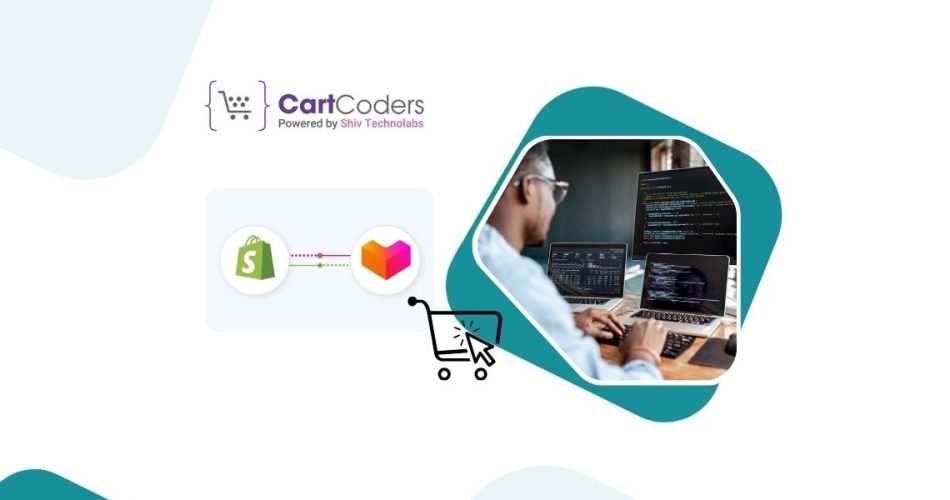Custom Engagement Solutions
Unlock tailored solutions with a free, no-obligation strategy session.
Expert Developers & Engineers on Demand
Scale Your Team with Skilled IT Professionals
Expert Guidance for Digital Transformation

Running an e-commerce business in Singapore requires more than just having a well-designed Shopify store. With the growing popularity of local marketplaces like Lazada and Shopee, it’s important to consider expanding your online reach by integrating these platforms with your Shopify store. Combining the flexibility of Shopify with the vast customer base of Lazada and Shopee can significantly boost sales, allowing you to target multiple customer segments efficiently.
In this guide, we will walk through the benefits of integrating Shopify with Lazada and Shopee, how this integration works, and the steps to get started. We’ll also cover best practices for managing products, inventory, and orders across all platforms, ensuring your business runs smoothly.

For Singapore businesses, selling on just one platform can limit your reach. By integrating Shopify with Lazada and Shopee, you can extend your product offerings to a much larger audience while managing everything from a single dashboard. Here are a few key benefits:
Lazada and Shopee are among the largest e-commerce platforms in Southeast Asia, each attracting millions of users daily. By tapping into these platforms, you’re presenting your products to a larger, highly active audience, increasing the chances of higher sales without duplicating efforts.
Also Read:- Ninja Van Integration Guide for Shopify: Streamlining Singapore Deliveries
With integration, you can manage your product listings, inventory, and orders from one place—your Shopify store. This eliminates the need to log in to multiple platforms, simplifying operations and reducing errors caused by managing products on different systems.
With greater exposure comes more sales opportunities. By listing your products on multiple platforms, you’re giving customers more ways to discover and purchase from your store. This helps you capture sales from customers who prefer to shop on Lazada or Shopee instead of visiting individual Shopify stores.
Syncing your Shopify store with Lazada and Shopee ensures that your inventory is always up-to-date across all platforms. This helps avoid situations where items might be oversold, as inventory is managed centrally, and stock updates happen in real-time.
Integrating Lazada and Shopee with Shopify can be achieved using apps that act as middleware between your Shopify store and the marketplaces. These apps synchronize product data, prices, stock levels, and order details, allowing seamless communication between your Shopify backend and the marketplace platforms.
Several third-party integration tools are available to help with this process. They often come with features like bulk listing, automatic inventory updates, and order synchronization, simplifying the task of managing products across multiple channels.
To begin, you’ll need to select an integration tool or app that can help sync your Shopify store with Lazada and Shopee. Some popular options for Singapore-based merchants include:
These tools connect your Shopify store to Lazada and Shopee and offer features such as real-time stock syncing, order tracking, and centralized product management.
Before syncing your Shopify store with Lazada and Shopee, ensure that you have seller accounts on both platforms. Registration is straightforward, and once complete, you’ll have access to the seller center of each platform, which allows you to manage your listings, orders, and customer interactions.
Once you’ve selected an integration tool, install it on your Shopify store and connect it to your Lazada and Shopee seller accounts. Most tools will guide you through the connection process. During this stage, you’ll need to map your products, ensuring that all details such as product names, descriptions, prices, and images are properly synced.
In the integration app, you’ll be required to map your Shopify products to Lazada and Shopee listings. This involves matching product SKUs and categories. Some tools also allow you to bulk-upload your Shopify products to Lazada and Shopee, saving time on manually listing each product.
Once products are mapped, configure your inventory and pricing settings. This will allow the integration tool to automatically update stock levels across all platforms when a sale is made. Additionally, you can set different pricing for Lazada, Shopee, and Shopify if you want to offer platform-specific discounts.
After integration, all orders placed on Lazada and Shopee will automatically appear in your Shopify dashboard. This allows you to manage fulfillment and shipping from a single location, ensuring a consistent experience across all sales channels.

To fully reap the benefits of integrating Lazada and Shopee with Shopify, it’s important to follow best practices for product management, inventory synchronization, and customer service.
Although your Shopify store might be your primary sales channel, it’s essential to tailor product listings for Lazada and Shopee. Each platform has its own algorithm for ranking products, and optimizing your titles, descriptions, and images according to the guidelines of each platform will help improve visibility.
Use automation tools to synchronize inventory and pricing across platforms in real-time. This reduces manual work and prevents stockouts or overselling. Most integration tools offer automatic syncs, which can be configured according to your preferences.
Each marketplace provides analytics that you can use to measure the performance of your products. By monitoring sales trends, customer reviews, and traffic data, you can adjust your marketing and pricing strategies to maximize sales on each platform.
Since you’re managing multiple platforms, it’s essential to offer consistent customer service. Make sure to respond promptly to inquiries on Lazada, Shopee, and Shopify, as slow response times can negatively impact your seller ratings. Additionally, handle returns and refunds efficiently across all platforms.
While selling across multiple channels offers huge opportunities for growth, it also presents some challenges. Managing different product listings, inventory, and customer service can become overwhelming if not properly streamlined.
Keeping your stock levels synchronized across all platforms is crucial. A common challenge in multichannel selling is overselling products that are out of stock. This can lead to negative reviews and platform penalties. The solution lies in using reliable integration tools that sync inventory in real-time, ensuring you never oversell.
Managing orders from different platforms can lead to fulfillment delays if the process isn’t properly coordinated. Use the Shopify dashboard as the central hub for processing orders from all platforms, and make sure that shipping information is accurately updated on each marketplace.
Pricing your products appropriately across platforms can be tricky. On Lazada and Shopee, customers may expect lower prices due to frequent promotions and vouchers. Therefore, it’s important to consider how pricing on these platforms aligns with your Shopify store pricing and adjust accordingly.
Integrating Lazada and Shopee with your Shopify store is a game-changer for any Singapore-based business looking to expand its e-commerce reach. By connecting these platforms, you simplify managing inventory, streamline order processing, and provide customers with multiple channels to discover and purchase your products. This not only enhances the shopping experience but also helps you boost your overall sales without the hassle of juggling multiple systems.
When it comes to making this integration seamless and effective, CartCoders is the partner you can rely on. As a leading Shopify development company in Singapore, we specialize in Shopify store integration services tailored to meet your business needs. Our team ensures that your Shopify store is fully synced with Lazada and Shopee, making it easier to manage products, track orders, and expand your business to a larger audience. Let CartCoders handle the complexities of integration, so you can focus on growing your business and maximizing your e-commerce potential.
Projects delivered in 15+ industries.
95% retention rate, building lasting partnerships.
Serving clients across 25+ countries.
60+ pros | 10+ years of experience.